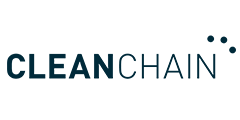The Golden State has set a new gold standard for climate reporting. Are you ready?
Article
Be ready for the Golden State’s regulations with audit-ready scope 3 data using a strong foundation of well-defined boundaries, robust calculation approaches and high-quality supplier reporting.
The recently signed California Climate Accountability Package makes the Golden State the first in the US to require in-depth climate reporting. In particular, the California Senate Bill 253, known as the Climate Corporate Data Accountability Act, stipulates that:
- Both public and private US businesses “doing business” in California with revenues greater than $1 billion must report third-party verified emissions for scopes 1, 2, and 3.
- The California Air Resources Board will oversee corporate compliance with the law. Companies that don’t comply with new regulations could be subject to civil penalties from the state’s attorney general.
- Companies will need to report on their 2025 direct emissions starting in 2026 and their 2026 scope 3 emissions starting in 2027. That means that before the end of this year, organizations will need to have a plan in place for gathering auditable emissions data.
Without a doubt, for most companies the most challenging part of this law will be meeting the scope 3 emissions requirements. So how to get started?
First, figure out which scope 3 categories are right for you
The Greenhouse Gas Protocol identifies 15 different categories of emissions within scope 3 — everything from emissions embedded in purchased goods and services to financed emissions. But which of the 15 should your company be measuring? The GHG Protocol’s approach requires companies to determine which scope 3 emissions categories they use based on what’s called the “relevance test.” Some of the factors for determining relevance include:
- Size: Companies should prioritize measuring emissions from activities that contribute significantly to the company’s total expected scope 3 emissions.
- Influence: Companies should focus on measuring emissions that the business is well positioned to directly reduce or influence.
- Risk: Companies should prioritize measuring those emissions that most contribute to the firm’s operating, strategic, regulatory or reputational risk exposure.
- Stakeholders: Companies should prioritize emissions deemed critical by key stakeholders (e.g. customers, suppliers, investors or civil society).
You can find the Scope 3 categories most likely to be important for your sector in CDP’s guidance and in the standards developed by the Sustainability Accounting Standards Board (SASB). However, to do this well, many companies seek out external expertise to determine their material categories using the relevance test.
Then, climb higher on the GHG emissions calculation “ladder”
Many companies start out measuring their Scope 3 inventories using methods that rely heavily on rough “spend-based” estimates. This is a good start, but growing interest in scope 3 data from regulators, investors and customers means that data quality must improve.
Generally speaking, a higher-quality Scope 3 data collection strategy prioritizes gathering data using calculation methods that are higher on the GHG calculation method “ladder,” such as activity or hybrid-based calculation approaches that leverage primary supplier data.
Each scope 3 category has its own rules around how to calculate emissions, so we recommend reviewing the GHG Protocol’s Corporate Value Chain (Scope 3) Accounting and Reporting Standard for guidance on various calculation methods. ADEC ESG Solutions also provides a useful guide on Carbon Accounting Methods for Estimating Scope 3 Emissions and how to better understand your GHG inventory.
Finally, gather supplier emissions data effectively and at scale
For most companies, scope 3 emissions and supplier engagement are almost intrinsically linked. However, suppliers can naturally be reluctant to answer emissions data requests, and resources are often short to chase them down or incentivize and support their efforts.
So, how should you engage suppliers at scale in an efficient and productive way? Software is one part of the answer – SaaS-based solutions can help you efficiently and thoughtfully engage and collect data from your suppliers. But additional people are needed. Many companies extend the reach of their sustainability and procurement teams through outsourced experts who sit in the time zones and speak the languages of their suppliers, assisting with data collection while also delivering technical assistance and emissions reduction advising.
Getting ahead of regulations with scope 3 data
Be ready for the Golden State’s regulations with audit-ready scope 3 data using a strong foundation of well-defined boundaries, robust calculation approaches and high-quality supplier reporting. ADEC’s Scope 3 data-as-a-service solution helps clients gather, process, visualize and deliver data where it’s needed, when it’s needed, so you can meet compliance requirements and gain the insights you need to achieve meaningful emissions reductions.
Get in touch dataassured@adec-innovations.com




